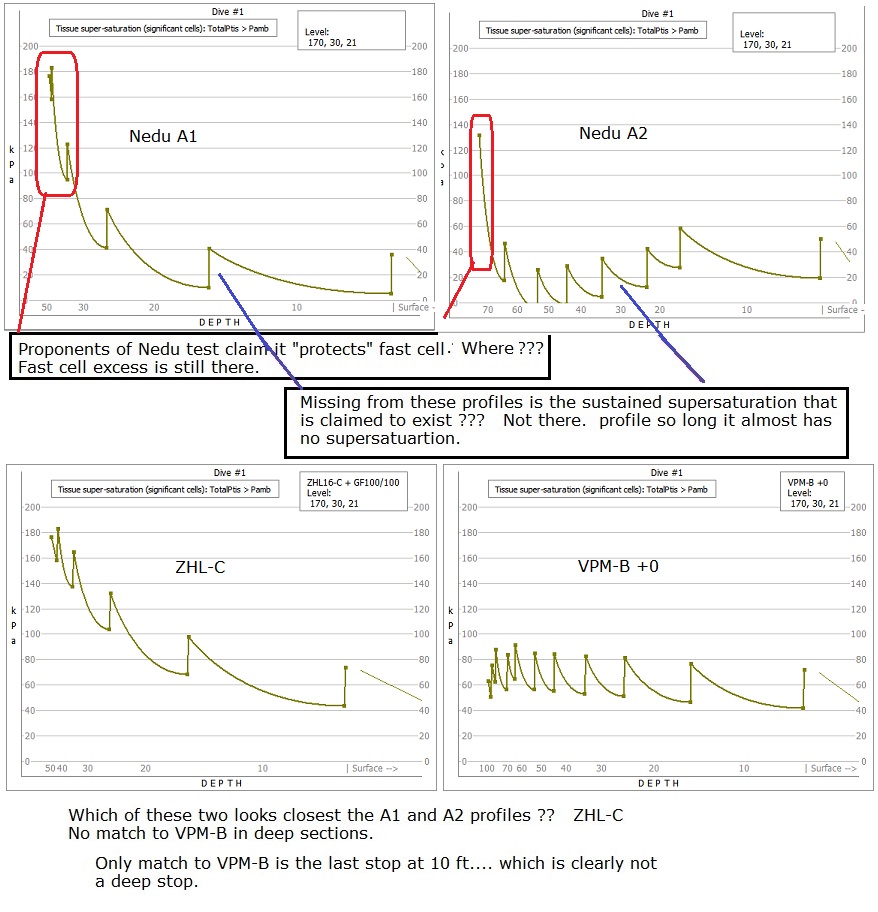I'll answer your question. I hope you'll answer mine as well.
The NEDU concluded that the reason the deep stop model exhibited more risk than the shallow model was the greater supersaturation exposure in the deep stop profile (i.e. integral supersaturation). The deeper stops required by bubble model theory come at the cost of higher total supersaturation exposure.
We have several things that are converging to the same conclusion. These were outlined by Dr. Mitchell in his presentation
here, but I list them below.
- First, remember that there was never any evidence that bubble models were better. They were developed based on theory and experiments in gel, not by dive trials. The theory is very attractive -- "do smarter stops, get out quicker". They were never a physiological model.
- A French study on 50-60m air dives showed deep stop protocols were not superior; one was inferior. They declined to switch to bubble models.
- Another study showed high grade bubbles following a deep stop VPM profile in 60-70m trimix dives in virtually every diver. High grade VGE is associated with higher DCS.
- NEDU study -- we all know that one. But these were live dives pushed to DCS. The deep stop profile exhibited over 3x the DCS risk. As stated above the only credible explanation is that the additional supersaturation exposure in the deep stop profile resulted in more DCS.
This pattern of deep stop models keeping the diver deeper, as required by bubble theory, comes at the cost of higher supersaturation exposure.
What actual dive trials are telling us is that the tradeoff appears to be a poor exchange. We can demonstrate that exchange in dive profiles we are all familiar with as I did
here. All the available research points in the direction that the exchange is a poor one.
While I wouldn't say that these conclusions have been "so quick", those are my reasons.
Now a question for you. In the post
here I show a pretty common profile where, for the same decompression time, VPM-B results in 30% more supersaturation exposure once the diver surfaces.
In light of the studies cited, what benefit do you see in the VPM-B profile that comes at the cost of 30% more decompression stress? Why do you believe the exchange (deeper stops for more supersaturation exposure) is a good one?





